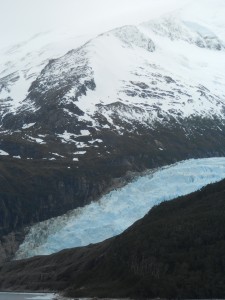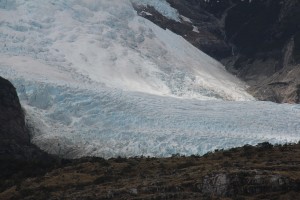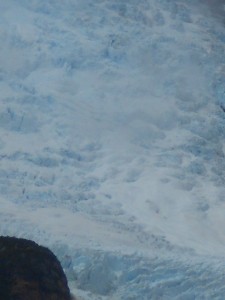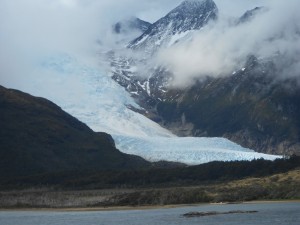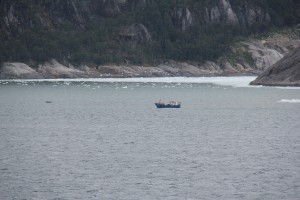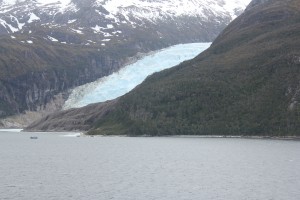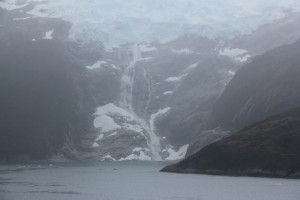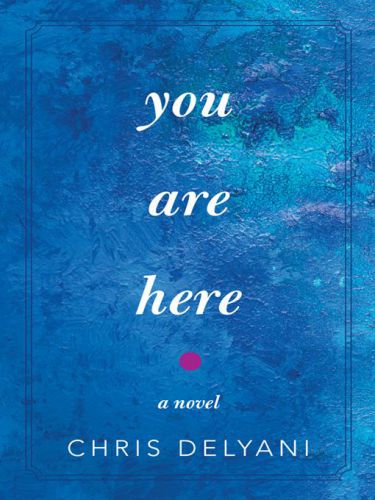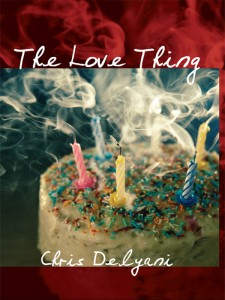As the ship crept along the Beagle Channel on the approach to “Glacier Alley,” I realized only then that I didn’t know what a glacier looked like. I guess I was expecting something that looked like one of the ice cubes from my freezer, only larger and dirtier. But what surprised me, ultimately, wasn’t the bigness of the glaciers—although the glaciers, don’t get me wrong, were awe-inspiringly big. It was their blueness.
Until then, the color blue had been in dismally short supply that day. The blue sky that greeted us upon our re-entry to the Beagle Channel from Cape Horn got swallowed up by lowering clouds, turning the water in the channel to a dull charcoal-gray. So the sight of the blue ice, tumbling down like piles and piles of cake frosting between the darkish-green mountains, came as something of a jolt—a pleasant jolt.
Less than a month ago I’d read an article by Natalie Angier in the New York Times about the fascination the color blue holds in science and in history. “Blue’s basic emotional valence is calmness and open-endedness, in contrast to the aggressive specificity associated with red,” Angier writes. “Blue is sea and sky, a pocket-sized vacation.” And I couldn’t help thinking of that article here at the ship’s rail, the icy mist blowing more and more into my face as we cruised down the Alley.
This blue was no ordinary blue. This was the blue you see in Windex and Curaçao bottles, the blue they dye cotton candy and Popsicles with, the blue of the Disney genie in Aladdin. And, like the genie, the blue seemed to glow from some mysterious inner chamber of these behemoths. As the ship’s science guide explained to us over the loudspeakers as we snapped pictures, the glaciers get their blue from the sheer weight of the ice squeezing out all its light-diffusing air. In other words, the awesome ice that carved out the Chilean fjords also produced this color before me, this mysterious Glacier Blue.
I can’t help feeling that if humankind allows global warming to continue to its logical conclusion, we’ll suffer not only from the devastating rise in sea levels but also from the loss of these gorgeous blue glaciers. We’d mourn the glaciers the way we’d mourn the extinction of some beloved species like the elephant or the tiger or the rhino.
But the glaciers won’t be extinct. Most likely, the glaciers will take implacable revenge in the next Ice Age, which has to happen sooner or later. And what will the glaciers do to us then? As the science writer Chet Raymo put it in an article he wrote for The Farmer’s Almanac, “They will push down across the continent like mile-thick bulldozers, scooping, grinding, and breaking. They will plane off the top of hills and excavate valleys. They will scrape Seattle, Chicago, New York, and Boston off the face of the Earth.”
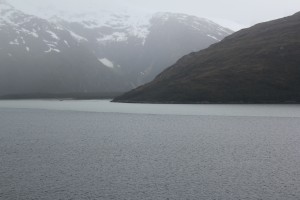
The apron of light blue around the promontory is not a trick of light; it’s the fresh water of the melting glacier meeting the salt water of the channel.

